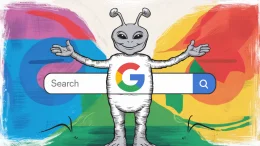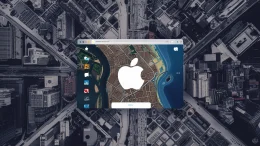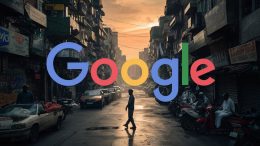In the ecosystem gamble of “open” or “closed,” Ford is putting all its chips on open. At this week’s Mobile World Congress, Ford announced it’s releasing the proprietary source code for its Sync AppLink platform to Genivi, an automotive-centric open source alliance.
The announcement follows Ford offering up its Sync AppLink system to competing automakers, and both the Blue Oval’s and General Motors’ courting of developers at this year’s Consumer Electronics Show by making APIs available to outside app creators.
In partnering with Genivi, Ford not only widens its outreach to developers, but also opens another front for its Sync platform to become an automotive app standard.
“Ford is a leader in this space and they chose a strategic decision to move like Google did with Android and be as open as possible,” Mark Boyadjis, an analyst at IHS Automotive, told Wired. “Getting these systems embedded and perfected is not something that can be leveraged by Ford or their technology partner alone. This has to be an open environment.”
Even though more automakers are offering in-dash app platforms, there’s little incentive for developers to create specific apps for cars. Developing apps for the relatively limited number of vehicle platforms available – and having to re-code for each automaker’s platform – pales in comparison to creating even a decently successful app for Apple’s App Store or Google Play. It’s the classic chicken-and-egg dilemma, and why most automakers offer only a handful of generic apps like Pandora.
Ford is establishing an open-source Genivi project that will contain the code and documentation necessary to implement AppLink software into any vehicle’s infotainment system for iOS and Android devices. The code, known as SmartPhoneLink, will be released under a BSD open-source license.
“Developers will have access to the software code for the audio head unit and the set of APIs for the smartphone apps and can implement it in their own way,” says Doug VanDagens, global director of Ford Connected Services. “This announcement is about the vehicle-side software being agnostic … and can run on Windows Embedded, QNX, Linux or other automotive OS.” VanDagens added that the AppLink brand will only be used for Ford and Lincoln vehicles. “But when it comes to the end product,” Boyadjis notes, “there will be unique Ford elements that make it different or better.”
VanDagens said that Ford chose to work with Genivi since the group has a solid foothold in the industry, with both large automakers and suppliers working with the group. And as one of several automotive technology organizations attempting to set a standard while gaining traction and members, the move is a big win for Genivi.
“Consumer electronics and automotive are moving so quickly, it’s clear that forums like Genivi and open projects … will bring development acceleration,” Joel Hoffman, a Genivi board member and an automotive strategist for Intel, said in an email.
One of the initial partners on the Genivi project is Ford navigation provider Telenav. “Apps in the car [are] a relatively new concept and we’re at an important intersection that will determine how the two interact moving forward,” says Sal Dhanani, vice president and general manager of Telenav’s automotive business. The goal, he added, is “to help standardize the way the smartphone brings connected information into the car.”
Hoffman predicts an increasing openness as automakers coalesce around various standards organizations pushing for more rapid integration of consumer electronics technology into cars. And the end result will hopefully be less frustration for car owners and fewer incompatibility problems between the latest portable devices and vehicles.
“We pioneered the concept of blending standards with open source code in the automotive industry, and are excited to see more [organizations] establish themselves,” says Hoffman. He notes that Web standard organization W3C recently announced an Automotive and Web Platform Business Group and the Car Connectivity Consortium has opened its MirrorLink spec. Linux has also formed an automotive working group and Cadillac was one of the first automakers to use it as the base for its CUE infotainment system.
While the action right now is in streaming music and social media apps, Boyadjis says it will take a more complete app ecosystem to get developers excited about creating cool apps for the car. “When it comes to Pandora or Facebook,” Boyadjis says, “these are things that people already have on their mobile device.” And he thinks that a Facebook for Automotive app is a no-brainer once a common car platform is established and “developers look to automotive as a whole piece, not as individual platforms.”
But Boyadjis believes that automotive apps will really take off once developers have access to performance and sensor data from cars, something Ford is also pushing with its OpenXC initiative.
“Think about what data from my catalytic converter and my oxygen sensors could do for my fuel economy,” he says. “It’s leveraging the developer community to do some pretty awesome things. It is fully possible that you could download an app to your car in the next five to 10 years and give yourself an extra 25 horsepower for a day at the track. Or if you’re taking a road trip from San Francisco to San Diego, you could download an app that gives better fuel mileage.”
Addressing security issues will be essential and “there are implications right now that might prohibit some OEMs from putting all their chips in an open source basket,” Boyadjis says. “But we think open source is going to grow and we’ve got numbers to reflect that. But it doesn’t mean that it’s not going to have growing pains.”
This Article was originally published on Wired:
Source Wired.com
Most Popular Tech Stories
- Kelly Betting – How It Works and the Kelly Criterion Explained
- What are Pokies? – The Latest Guide to How Pokies Work in Australia
- AI industry needs annual revenues of more than the UAE’s GDP to offset costs
- Pepe Unchained Meme Token ICO Hits $2 Million – Could PEPU See a Post-Launch Surge Like PEPE?
- 4 Best Meme Coins to Buy with 100x Gains Potential – Top Picks for July 2024
Latest News
Does AI increase productivity at work? New study suggests otherwise
Artificial intelligence software reduces productivity and harms the working environment, according to a study from the freelance platform, Upwork. The findings appear to question how AI is being deployed at...
















